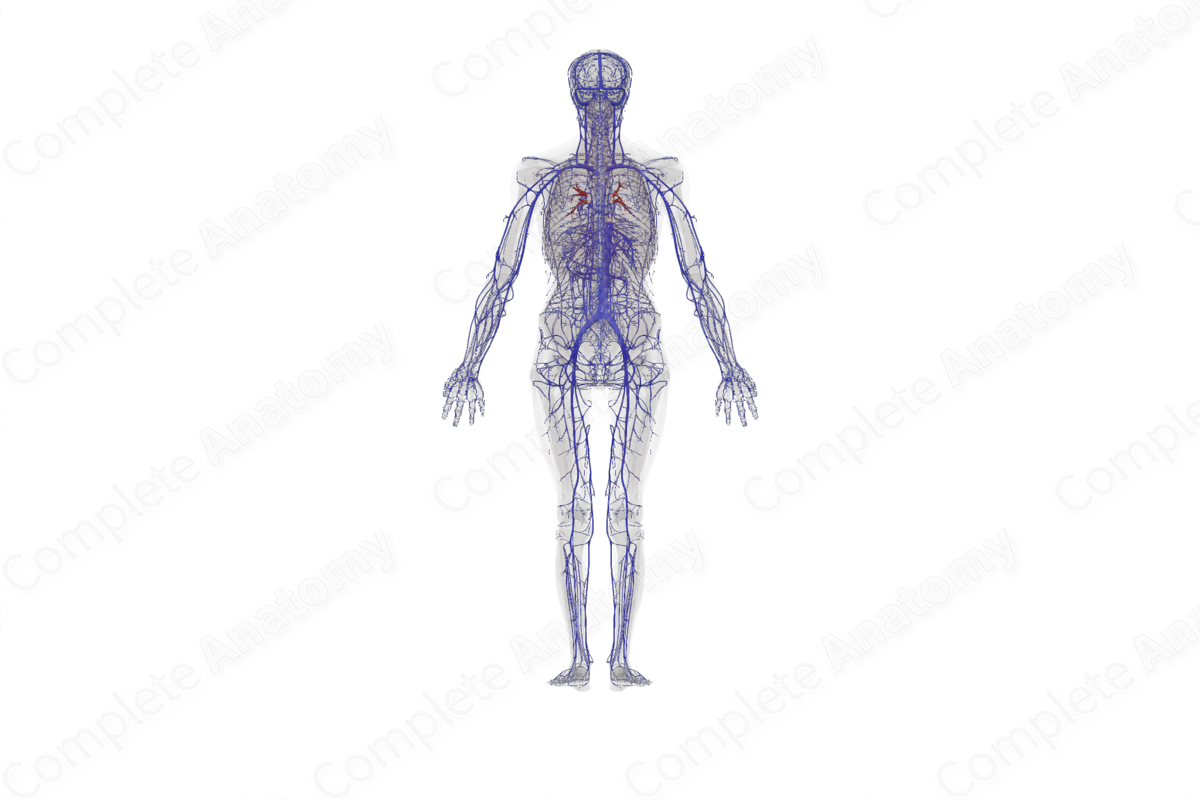
Structure
Veins are blood vessels that carry blood back to the heart. They have relatively thin walls which give them a misshapen or flattened appearance in a cross-sectional view. As veins have thinner walls in comparison to arteries, they consequently have a larger lumen.
Veins possess three principal layers in their wall. Deep to the vein is the tunica intima, surrounded by a middle layer called the tunica media. The most superficial layer of the vein is the tunica externa.
Veins further away from the heart, for example the lower leg, contain valves, which are inward projections of the tunica intima. Valves permit blood flow in one direction and prevent the backflow, or retrograde flow, of blood.
Veins have little elastic recoil, which is the tendency of the tissue to revert to its original shape once deformed, in comparison to arteries which are very elastic. This is because veins have less elastin fibers and smooth muscle in their walls, compared to arteries.
Related parts of the anatomy
Anatomical Relations
Veins are usually doubled or tripled in the body, known as vena comitans, where a pair of veins are found on either side of an artery. This close relationship to the artery is beneficial for the veins as the arteries’ pulse assists in venous return.
Normally the pressure in veins is much lower than in arteries. This is because blood must travel through arteries and capillaries before reaching the veins. Additionally, veins have thinner walls than arteries.
Some large veins, such as the superior vena cava, have broad bundles of longitudinal smooth muscle and a well-developed tunica externa.
Function
All veins carry blood from body organs and tissues back to the heart. They typically transport deoxygenated blood, except for the pulmonary veins. These four veins transport oxygenated blood from the lungs to the heart.
Due to the low levels of elastin fibers, lower mass of smooth muscle (in comparison to arteries), and relatively large lumen, veins can be stretched and expanded (distensible). This enables the veins to act as a reservoir, allowing storage of large volumes of blood. This can occur when blood returning to the heart is disrupted due to low pressure or compression.
Valves within the vein prevent backflow of blood. This is particularly important for when flow is against gravity, for example blood flowing back to the heart from the toes.
List of Clinical Correlates
- Venous insufficiency
- Deep vein thrombosis
- Portal hypertension
- Varicose veins




